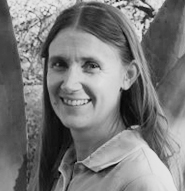This text is a transcript based on the live webinar titled, "Fear of Falling and Activity Restriction Among Community-Dwelling Older Adults" presented by Jane Painter Ed.D., OTR/L, FAOTA.
>> Jean Painter: I am going to be talking to you about fear of falling and activity restriction among community-dwelling older adults. After this course, I hope that you will be able to describe and discuss the interrelationship between fear of falling and falls, how this interrelationship impacts the degree to which older adults engage in their occupations, identify fear of falling and related screening tools that may be implemented into your own OT practice, and utilize evidence-based findings to enhance your clinical decision-making. This will help promote your clients participation in occupational therapy treatment and increase the ability of your clients to engage in their occupations.
What is an unexplained fall?
First of all, what is an unexplained fall? It is an event which results in a person coming to rest inadvertently on the ground or floor or other lower level surface. It may include slips or trips, but it does not include any event that could occur for anyone of any age to fall, such as a porch collapsing, having a seizure, or being hit by a rogue grocery cart.
Falls in Older Adults
Falls in older adults are the leading cause of accidental deaths, incur heavy utilization of healthcare services such as OT, PT, orthopedics, etc., and may cause premature nursing home placement. It occurs in over 33% of older adults, 65 years and older, and out of these fallers 50% of these are 80 years or older. Fallers incurred 20% to 30% of moderate to severe injuries. That is a staggering statistic and that is one reason why there is such a heavy utilization of healthcare services and why falls are so costly.
This diagram here is from the Centers of Disease Control showing the different age ranges of under 12 years of age, 12 to 17, 18 to 44, 45 to 64, 65 to 74, and those over 75 years of age. This is showing the 2010 rate of nonfatal, medically consulted, fall injury episodes by age group. As you can see, those over 75 incurred the most injury related falls. I think this is a very important statistic. If you are working with people in the 45 to 64 range or 65 to 74, and particularly those over 75, you need to be inquiring about the fall history and fear of falling among your older populations.
What is an unexplained fall?
First of all, what is an unexplained fall? It is an event which results in a person coming to rest inadvertently on the ground or floor or other lower level surface. It may include slips or trips, but it does not include any event that could occur for anyone of any age to fall, such as a porch collapsing, having a seizure, or being hit by a rogue grocery cart.
